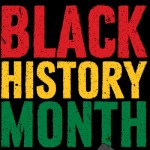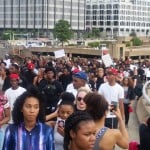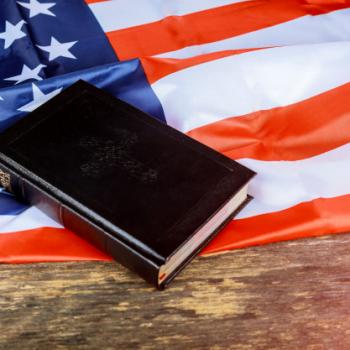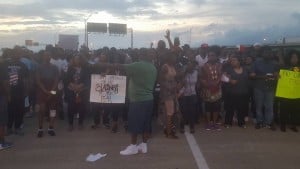 We here at R3 are pleased to announce that the editors of Citizen Critics have agreed to allow us to cross publish some of their terrific articles. Below is one from Dr. Renea Fry that examines the Black History Month speeches of Presidents Obama and Trump.
We here at R3 are pleased to announce that the editors of Citizen Critics have agreed to allow us to cross publish some of their terrific articles. Below is one from Dr. Renea Fry that examines the Black History Month speeches of Presidents Obama and Trump.
by Renea Frey
*Published first at Citizen Critics.
On February 1, 2017, President Trump delivered a speech for Black History Month to about a dozen black Americans, all of whom support or work for him. During his short speech, he complained about the media and made little reference to black history, which many considered indecorous for the occasion. The press noted the inappropriate content of his speech and Reverend Al Sharpton told The Guardian that it indicated a “dire forecast” for the black community, “tantamount to an insult.” Trump’s speech can be read as an analogy for racism in America: given the platform to speak about black history, black Americans, and racial problems with potential solutions, Trump chose instead to speak primarily about himself.
While Trump’s superficial knowledge of black history is already well-documented, an analysis of his speech compared to Obama’s on the same occasion from 2009 (Obama’s inauguration year) displays rhetorical contrasts that point to grave differences in racial attitudes between the two administrations. When comparing Trump’s speech to Obama’s, key differences can be discerned in the audience addressed, approaches to personal controversies, the specificity of issue-related language, and the use of words acknowledging race.
Both Black History Month speeches use “we” in the opening lines, but who is included in that audience is quite different. Trump begins with a discussion of election results saying that it “came out really well,” and that “Next time we’ll triple the number or quadruple it. We want to get it over 51, right?” referring to a “we” contained within the room. The limited scope of address is also apparent when he announces the occasion of Black History Month, which he labels “our little breakfast, our little get-together,” a description minimizing the importance of Black History Month and limiting the scope of inclusion to the group of assembled supporters. The limited sense of audience shows Trump’s lack of understanding about the context and situation, making his speech inappropriate for wider audiences.
Conversely, Obama begins his 2009 address with “We the people, in order to form a more perfect union,” invoking a comprehensive “we.” Obama’s inclusiveness is apparent later as he calls for citizens to “come together,” “solve [problems] together,” “work together,” “do it together,” “serve together fight together and bleed together,” in a manner that elicits a national sense of inclusivity and collective action.
Both speakers refer to recent controversies — Trump to dissatisfaction with press coverage, and Obama to his relationship with Reverend Jeremiah Wright. However, the way these controversies are handled diverges, demonstrating contrasts in the credibility (or ethos) of each speaker as it relates to racial awareness.
Trump briefly refers to Dr. Martin Luther King, Jr., but largely as a foil for his ire with the press. He mentions the Time report (which was retracted) that he had removed the bust of King from his office, claiming, “that was fake news. Fake news.” He never returns to the accomplishments of King, stating instead, “I think it was a disgrace, but that’s the way the press is. Very unfortunate.” In fact, complaints about the press and comments on his election results (227 out of 745 words), and identifying those assembled (173/745) comprise 53% of Trump’s speech. This percentage compares to only 21% of words (155/745) focusing on black history.
Obama uses his controversial issue to deepen a discussion of black history and unity. He denounces Wright’s “use [of] incendiary language” but also contains that contradiction saying, “I can no more disown him than I can disown the black community.” In this section of Obama’s speech, he connects American diversity and imperfections into a unifying call for acceptance and even love. For Obama himself, “These people are a part of me. And they are part of America, this country that I love.” In this call for unification, Obama does not ignore racial inequality. Instead, he integrates the critique of Wright with a focus on race relations and overcoming inequalities.
Both speeches deal with jobs, safety, and economic issues in black communities, but do so in disparate styles and level of detail. Trump refers to jobs and communities in stereotypically racialized terms, assuming that black people reside in inner cities. Using vague, informal language, he says:
We’re gonna need better schools and we need them soon. We need more jobs, we need better wages, a lot better wages. We’re gonna work very hard on the inner city…We need safer communities and we’re going to do that with law enforcement. We’re gonna make it safe. We’re gonna make it much better than it is right now. Right now it’s terrible…
Trump offers unclear solutions to ambiguous problems, with the added assumption of the “terrible” nature of these communities now. His vague words demonstrate little familiarity with issues faced by those he claims to address and he proposes no concrete solutions, undermining his ethos as an interested, informed, or expert speaker on the subject.
Obama refers to specific issues in black communities, articulating his familiarity with obstacles faced by some members of his audience, and building his ethos as a speaker. Rather than simplified judgments, Obama describes “the lack of basic services in so many urban black neighborhoods — parks for kids to play in, police walking the beat, regular garbage pickup, building code enforcement,” concrete challenges that establish his informed view. Calling upon an audience that explicitly invokes people of all races, he confirms that racial injustices “are real and must be addressed, not just with words, but with deeds, by investing in our schools and our communities; by enforcing our civil rights laws and ensuring fairness in our criminal justice system.”
These concrete solutions contrast sharply with Trump’s vague language of “better schools… more jobs… [and] better wages,” showing Obama’s knowledge of the causal factors for racial inequity, as well as supporting his ethos as an expert speaker. Obama says that for America to recover from its “tragic past…requires all Americans to realize that your dreams do not have to come at the expense of my dreams; that investing in the health, welfare and education of black and brown and white children will ultimately help all of America prosper.” This call to action invokes a wide, multi-cultural, multi-racial audience that goes beyond the bounds of those assembled. Additionally, his speech expands the specific occasion to connect with his overall mission as President.
The use of language acknowledging race is also very different between these two speeches. Trump does not use the words “race” or “racism” at all in his speech and only uses the word “black” twice; first, when announcing Black History Month, and second when making a simplified summary referencing the “millions more black Americans who made America what it is today” after naming exactly four black people — Reverend King, Harriet Tubman, Rosa Parks, and Frederick Douglass, the latter in an apparent present tense reference that led to critique in the press.
By contrast, in Obama’s speech, race is of primary concern and he mentions “race” or “racism” 16 times, and the word “black” a total of 39 times. Given the occasion, this shows Obama’s awareness of exigence, purpose, and audience, whereas Trump appears to lack any understanding of these concepts. Trump’s ignorance of the rhetorical situation makes his speech significantly less effective in addressing the specific exigencies at hand, as well as the larger context of the beginning weeks of his presidency, oversights that ultimately point to racism more than rhetorical ability.
Trump’s denigration of the address for Black History Month as “our little breakfast, our little get-together” reflects a self-centered stance where the ostensible purpose of the event is for his own benefit. As a wealthy white man, he — not black leaders or black Americans — is the center of attention. Even in a speech supposedly about black history, Trump situates that purpose at the edges of his concerns, rhetorically marginalizing black Americans even within the context of his speech.
The limited attention to black Americans and racial inequality in Trump’s speech shows that he is not merely ignorant of racial issues, but is ignoring them entirely. Trump appropriates the focus that should rightly be placed on black Americans and history for himself as a platform to condone those who support him (those assembled, Fox News) while condemning those who do not. Unlike Obama, who used his personal experience to strengthen his credibility as an expert speaker, Trump coopts the occasion to reinforce self-aggrandizing beliefs, disregarding black history, black people, and anything other than himself.
While it is no secret that Trump is not a nuanced speaker, a comparative analysis of his Black History Month address contrasted with Obama’s demonstrates a disparity, not only in rhetorical style, but also in how we can expect racial issues to be addressed in upcoming years. Trump’s appropriation of this rhetorical situation speaks volumes about Trump’s ethos as a speaker and a President, as well as indicating the racist foundations of his leadership.
s professor of Composition and Rhetoric at Xavier University, as well as the Writing Program Director. Dr Frey is also the Co-Editor of English Notes, the web site and journal for the College English Association of Ohio.
Donate to the Work of R3
Like the work we do at Rhetoric Race and Religion? Please consider helping us continue to do this work. All donations are tax-deductible through Gifts of Life Ministries/G’Life Outreach, a 501(c)(3) tax exempt organization, and our fiscal sponsor. Any donation helps. Just click here to support our work












